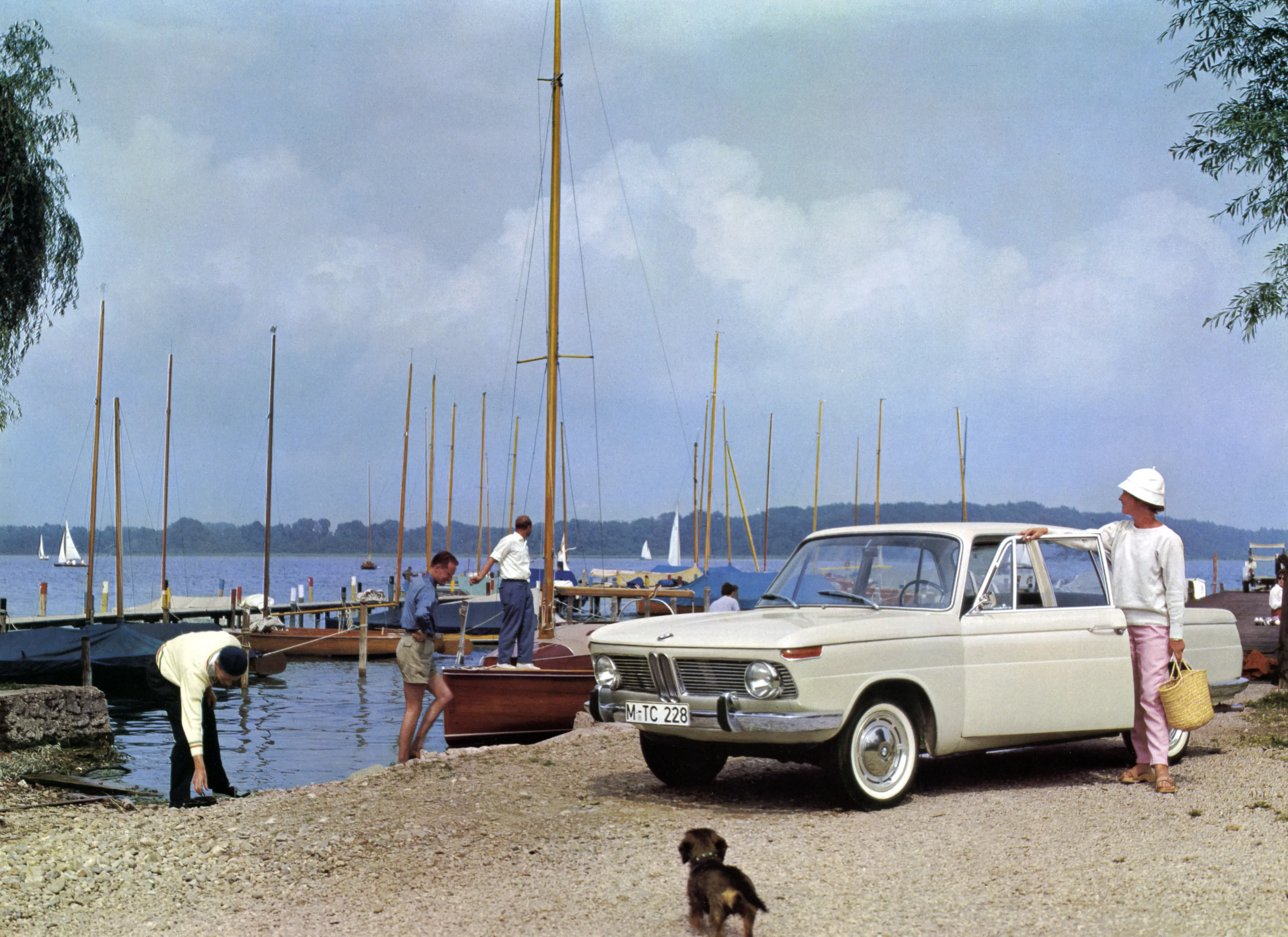Sixty Years of the BMW Neue Klasse
29 December 2021
The 1961 Frankfurt International Motor Show looked set to be a most exciting event, not least for the new BMW priced at DM 8,500. The sales copy promised the prospective buyer ‘sportiness, refinement, genuine comfort and timeless elegance’ while the bodywork featured a distinctive ‘kink’ in the rear doors. As for performance, the brochure claimed the M10 SOHC 1.5-litre engine would be ‘up to the minute for the next ten years’.
In short, the 1500 was perfect for the German motorist who mourned the recent demise of the Borgward Isabella and for ‘Aufsteigers’ (social climbers). By the end of the show, the company’s sales team had received thousands of advance orders, and the latest BMW looked set to redefine the marque’s image. It was all a far cry from just a few years earlier when the company was on the verge of bankruptcy.

In the late 1950s, BMW suffered from narrow profit margins on the Isetta and the slow sales of the four-wheeled 600 bubble car. They were also losing money on every large ‘Baroque Angel’ saloon and, above all, lacked transport for the ambitious driver looking to trade up from a Ford Taunus 12M or an Opel Rekord P1. In fact, BMW had contemplated such a model as early as 1953, but Project 530 halted five years later due to a lack of funds.
By the end of the decade, the Deutsche Bank even contemplated selling the firm to Daimler-Benz. However, dealers’ efforts and those of trade unions and shareholders prevented this step, and the industrialist Herbert Quandt took control of the company. The popularity of the 700 of 1959 also enhanced the firm’s cash flow, and the result was the 1500. Visitors to the Frankfurt Show queued for half an hour to see the ‘Neue Klasse’ (New Class) on the BMW stand.
One major selling point was the 1500’s clean styling when rival Fords and Opels looked very quasi Detroit. BMW’s Head Stylist Wilhelm Hofmeister consulted Giovanni Michelotti regarding the 1500’s lines, and the rear window treatment was to compensate for a potential weak point on the C pillar. The firm also wittily observed, “We gave the BMW good brakes so that you never get too close to the man in front of you. Unfortunately, we cannot force the man behind you to drive a BMW. His bad luck”.
Full production commenced in 1962, although just 250 RHD examples left the factory. By September of 1963, BMW offered the 1800, powered by a 1,773cc version of the M10 unit. The UK price was a considerable £1,441 6s 1d, and this was definitely a car for the Goodwood Set. As for the 1800 Ti (‘Turismo Internazionale’), it boasted twin Solex carburettors, 20 bhp more power and a top speed of nearly 110 mph. An Autocar test described it as ‘uber-1965’ and noted:
For the sporting driver who is denied a two-seater for family reasons we would put this 1800TI high on the list. Yet this car would appeal as much to the young (but rich) bachelor who enjoys his driving, knows how to handle a fast machine and most of all appreciates quality engineering.
Production of the Neue Klasse reached the 100,000 mark on the 18th August 1965. Seven years later, the Series replaced the range, by which time its place on BMW’s history was already assured. Quite simply, the 1500 helped to save one of Germany’s most famous car marques.
